AMD ATI Radeon HD 2400 Series User manual
- Category
- Graphics cards
- Type
- User manual
This manual is also suitable for

ATI Radeon™
HD 2400 Series
User’s Guide
P/N 137-41371-10

ii
© 2007 Advanced Micro Devices, Inc. All rights reserved.
The contents of this document are provided in connection with Advanced Micro Devices, Inc. (“AMD”)
products. AMD makes no representations or warranties with respect to the accuracy or completeness
of the contents of this publication and reserves the right to make changes to specifications and product
descriptions at any time without notice. No license, whether express, implied, arising by estoppel or
otherwise, to any intellectual property rights is granted by this publication. Except as set forth in AMD’s
Standard Terms and Conditions of Sale, AMD assumes no liability whatsoever, and disclaims any
express or implied warranty, relating to its products including, but not limited to, the implied warranty of
merchantability, fitness for a particular purpose, or infringement of any intellectual property right.
AMD’s products are not designed, intended, authorized or warranted for use as components in systems
intended for surgical implant into the body, or in other applications intended to support or sustain life, or
in any other application in which the failure of AMD’s product could create a situation where personal
injury, death, or severe property or environmental damage may occur. AMD reserves the right to
discontinue or make changes to its products at any time without notice.
Reproduction of this manual, or parts thereof, in any form, without the express written permission of
Advanced Micro Devices, Inc. is strictly prohibited.
Trademarks
AMD, the AMD Arrow logo, AMD Athlon, AMD Opteron and combinations therof, AMD-XXXX, ATI and
ATI product and product-feature names are trademarks of Advanced Micro Devices, Inc.
Microsoft is a registered trademark of Microsoft Corporation.
Other product names used in this publication are for identification purposes only and may be
trademarks of their respective companies.
Disclaimer
While every precaution has been taken in the preparation of this document, Advanced Micro Devices,
Inc. assumes no liability with respect to the operation or use of AMD hardware, software or other
products and documentation described herein, for any act or omission of AMD concerning such
products or this documentation, for any interruption of service, loss or interruption of business, loss of
anticipatory profits, or for punitive, incidental or consequential damages in connection with the
furnishing, performance, or use of the AMD hardware, software, or other products and documentation
provided herein.
Advanced Micro Devices, Inc. reserves the right to make changes without further notice to a product or
system described herein to improve reliability, function or design. With respect to AMD products which
this document relates, AMD disclaims all express or implied warranties regarding such products,
including but not limited to, the implied warranties of merchantability, fitness for a particular purpose,
and non-infringement.
Macrovision
Apparatus Claims of U.S. Patent Nos. 4,631,603; 4,819,098; 4,907,093; 5,315,448; and 6,516,132.
Licensed for limited viewing uses only.
This product incorporates copyright protection technology that is protected by US patents and other
intellectual property rights. Use of this copyright protection technology must be authorized by
Macrovision, and is intended for home and other limited viewing uses only unless otherwise authorized
by Macrovision. Reverse engineering or disassembly is prohibited.
Documentation Updates
AMD is constantly improving its product and associated documentation. To maximize the value of your
AMD product, you should ensure that you have the latest documentation. AMD’s documentation
contains helpful installation/configuration tips and other valuable feature information.

iii
Important Safety Instructions
• Read Instructions—All the safety and operating instructions should be read
before the product is operated.
• Retain Instructions—The safety and operating instructions should be retained
for future reference.
• Heed Warnings—All warnings on the product and the operating instructions
should be adhered to.
• Compatibility—This option card is for use only with IBM AT or compatible UL
Listed personal computers that have Installation Instructions detailing user
installation of card cage accessories.
• Grounding—For continued protection against risk of electric shock and fire, this
accessory should be installed only in products equipped with a three-wire
grounding plug, a plug having a third (grounding) pin. This plug will only fit into a
grounding-type power outlet. This is a safety feature. If you are unable to insert
the plug into the outlet, contact your electrician to replace the obsolete outlet. Do
not defeat the safety purpose of the grounding-type plug.
• Secure Attachment—All card securement pins shall be completely tightened as
to provide continuous bonding between the option card and the PC chassis.
• Lightning—For added protection for this product during a lightning storm, or
when it is left unattended and unused for long periods of time, unplug it from the
wall outlet, and disconnect the antenna or cable system. This will prevent
damage to the product due to lightning and power-line surges.
• Power Lines—An outside antenna system should not be located in the vicinity of
overhead power lines or other light or power circuits, or where it can fall into such
power lines or circuits.
Note: This graphics card is for use only with compatible UL Listed
personal computers that have installation instructions detailing user
installation of card cage accessories.

iv

v
Contents
Introduction . . . . . . . . . . . . . . . . . . . . . . . . . . . . . . . 1
System Requirements 1
Installing the Graphics Card . . . . . . . . . . . . . . . . . 3
Before You Begin 3
Record the Serial and Part Numbers 3
Uninstall Old Graphics Drivers 4
Install the Graphics Card 5
Installing and Configuring Displays . . . . . . . . . . . 7
Connections 7
Adapters 8
Supported Display Connections 9
Installing and Configuring Displays 10
Installing Software and Drivers . . . . . . . . . . . . . . 13
ATI Catalyst™ Control Center . . . . . . . . . . . . . . . 15
Help 16
Using TV Display and Capture Features. . . . . . . 17
Viewing the PC’s Display on TV or HDTV 17
Connecting to a TV, VCR, or HDTV 18
Capturing Video 30
Avivo™ Video Converter 32
CrossFire™ . . . . . . . . . . . . . . . . . . . . . . . . . . . . . . 37
Basic Requirements 37
Installing CrossFire™ Graphics Cards 37
Installing CrossFire™ Graphics Cards 38
Enabling CrossFire™ 41

vi
Reference . . . . . . . . . . . . . . . . . . . . . . . . . . . . . . . . 43
Troubleshooting 43
Determine the System Card Bus Type 46
Updating your AGP Motherboard/Chipset Drivers 47
Reinstalling Drivers 49
Product Registration 50
Customer Care 50
Additional Accessories 52
Compliance Information 52
Index . . . . . . . . . . . . . . . . . . . . . . . . . . . . . . . . . . . . 55

1
Introduction
This guide will help you get your hardware and software installed. Use the
ATI Catalyst™ Control Center to access the comprehensive help system,
generate a problem report, and get the software version information.
System Requirements
Hardware • AMD Athlon® or Intel® Pentium® 4
• 512MB of system memory; 1GB or more for best
performance.
• Optical drive for installation software (CD-ROM or
DVD-ROM drive).
• A 550 Watt or better power supply. For a list of certified
power supplies, see ati.amd.com/certifiedpsu
CrossFire™
Requirements
To implement an CrossFire™ configuration using the ATI
Radeon™ HD 2400 Series, requires:
• A CrossFire™ certified motherboard with two (2) PCI
Express® x16 slots and correct PCIe™ chipset driver.
• A second ATI Radeon™ HD 2400 Series graphics
card.
• Two CrossFire™ internal bridge interconnects.
• A specialized PCI Express® 550 watt or greater power
supply. Consult your computer system manual to
ensure the power supply is designed to accommodate
a high-end graphics card with a peak dissipation above
150 watts.
For an up-to-date listing of CrossFire™ certified
motherboards, see
• ati.amd.com/products/certification
For an up-to-date listing of certified power supplies, see:
• ati.amd.com/certifiedpsu

2

3
Installing the Graphics Card
This topic guides you through the installation of the graphics card.
Before You Begin
Before you begin installing the graphics card, do the following.
• Record the Serial and Part Numbers on page 3.
• Uninstall Old Graphics Drivers on page 4.
When you have completed the above procedures, do the following:
Install the Graphics Card on page 5.
Record the Serial and Part Numbers
To register the graphics card, you need the serial number and part number
printed on the graphics card.
1 Look for the serial number and part number on the graphics card.
Note: They are usually located on a sticker on the back of the card,
and are shown in boldface and underlined in the illustration that
follows.
Sample serial number and part number arrangement
2 Write down these numbers before installing the graphics card.

4
Uninstall Old Graphics Drivers
To ensure successful installation of the graphics card driver, uninstall the
graphic drivers for the existing graphics card before removing the graphics
card from the computer.
Depending on the operating system, choose either the Windows® XP or
Windows Vista™ uninstall procedure:
• Uninstall old graphics drivers (Windows® XP) on page 4.
• Uninstall old graphics drivers (Windows Vista™) on page 4.
Uninstall old graphics drivers (Windows® XP)
1 With the current graphics card still in the computer, close all open
applications.
2 From the Control Panel, select Add/Remove Programs.
3 Select the current graphics card drivers, and then click Add/Remove.
The Wizard helps remove the current display drivers.
Note: If the previously installed graphics card has any additional
software installed, it may also be removed at this point. For example,
DVD player or multimedia applications.
4 Turn off the system after removing the drivers.
Uninstall old graphics drivers (Windows Vista™)
1 With the current graphics card still in the computer, close all open
applications.
2 From Control Panel, double-click Programs and Features, and
then select the graphics card driver from the list of software programs.
3 Click Uninstall.
4 If the Programs and Features uninstall confirmation dialog
appears, click
Yes.
Note: If the previously installed graphics card has any additional
software installed, it may also be removed at this point. For example,
DVD player or multimedia applications.
5 Turn off the system after removing the drivers.

5
Install the Graphics Card
1 Make sure the computer, monitor, and other peripheral devices are
off.
2 Unplug the computer power cord and disconnect cables from the back
of the computer.
Caution! To avoid possible damage to the motherboard, wait
approximately 20 seconds after unplugging the power cord before
disconnecting a peripheral or removing a component from the
motherboard.
3 Remove the computer cover.
If necessary, consult the computer manual for help removing the
cover.
Caution! To avoid possible damage to the computer components,
discharge your body’s static electricity by touching the power supply
case or the metal surface of the computer chassis.
4 Remove any existing graphics cards from the computer.
Warning! Some graphics cards can get hot while
operating. Wait about five minutes after turning off the
computer before touching the card.
5 Locate the appropriate slot for the graphics card and, if necessary,
remove the metal back-plate cover.
Note: High-performance graphics cards require good airflow to
prevent overheating. Ensure adequate airflow around the card.
6 Align the graphics card with the slot and press it in firmly until the
card is fully seated.
7 Fasten the graphics card securely.
8 Make sure the cables are not interfering with anything inside the
computer (for example, a cooling fan) and then replace the computer
cover.

6
9 Reconnect any cables you have disconnected, connect the monitors,
and then plug in the computer and monitor power cords.
10 Turn on the monitor and then the computer.
Note: For troubleshooting information, see
Reference on page 43.
Note: For information on connecting monitors, see Installing and
Configuring Displays on page 7.
Note: If you are installing a CrossFire™ configuration, see
CrossFire™ on page 37.

7
Installing and Configuring Displays
Connections
The following illustrates some common connections on the ATI Radeon™
HD 2400 Series graphics cards. The connections available may vary by
model.
Sample 1: ATI Radeon™ HD 2400 Series Connections
Legend
1 DVI-I Dual Link connection (Provides audio and video digital
signals. It provides HDMI™ output that is compatible with most
HDMI™ devices.)
2 S-Video connection (Video In/Video Out)
3 SVGA connection

8
Sample 2: ATI Radeon™ HD 2400 Series Connections
Adapters
The following illustrates the adapters you can use to connect the graphics
card to other display devices.
Legend
1 DMS-59 connection (Supports up to two DVI devices)
2 S-Video connnection (Video Out)
3 SVGA connection
ATI DVI-to-VGA Adapter
ATI DVI to HDMI™ Adapter
The HDMI™ adapter is a proprietary adapter
manufactured and sold by AMD approved
manufacturers (like Wieson Technologies Co., Ltd.)
that has a specific detection mechanism to allow
properly configured graphics cards to pass HDMI™
signals through a DVI connection to an HDMI™
compliant device.
ATI DVI-to-HDTV Adapter

9
Supported Display Connections
To ensure the highest possible performance, only one display device is
supported when CrossFire™ is active. When CrossFire™ is active other
display devices connected to the other connections on both graphics cards
are rendered inactive.
If additional displays are required when CrossFire™ is active, use either
SurroundView™ (included on the installation CD, custom software install)
or an additional graphics card.
The graphics card provides hardware support for DVI-I and VGA
monitors, and HDMI™ HDTVs (using a DVI-to-HDMI™ adapter). It also
provides TV output via the S-Video (VIVO) connection in composite,
S-Video, and component TV formats.
The following table shows display configurations available when
CrossFire™ is not enabled.
ATI 9-Pin Cable for Video Input/Video Output
ATI 9-pin HDTV Output Cable
DMS-59-to-Two DVI-I Adapter Cable
Display Connections
Cathode ray
tube analog
display
• SVGA connection and VGA cable
• DVI-I connection and DVI-I-to-VGA adapter and VGA
cable
LCD display • DVI-I connection and DVI cable
• DVI-I connection and DVI-I-to-VGA adapter and VGA
cable

10
Installing and Configuring Displays
Connect the monitor
1 Make sure the computer and monitor are off.
2 Plug the monitor cables into their appropriate connectors.
3 Power on the monitors first and then restart that computer so that
Windows® can detect the new hardware settings.
4 When the New Hardware Found Wizard appears, at the appropriate
prompt insert the installation CD to load the drivers for the graphics
card.
Once the drivers and software have been installed, configure the
display.
Configure the display
1 Navigate to the Control Panel and choose Display, or right-click on
the desktop and choose
Properties.
2 Choose the Settings tab and select the screen resolution and color
depth that best suit your requirements and your display’s
performance.
3 Click Advanced and then select the Monitor tab.
TV • DVI cable and DVI-to-HDTV adapter and RCA cables
• S-Video connection and S-Video cable
• S-Video connection and ATI 9-Pin HDTV Output Cable
and RCA cablest
HDTV display • DVI connection and DVI cable
• DVI cable and DVI-to-HDTV adapter and RCA cables
• S-Video connection and ATI 9-Pin HDTV Output Cable
and RCA cables
• S-Video connection and S-Video cable
HDMI™ HDTV • DVI connection and DVI-to-HDMI™ adapter and HDMI™
cable
Display Connections

11
4 Choose a refresh rate from the drop-down list.
Caution! Choosing a refresh rate unsupported by your display may
damage your display. Consult your display’s documentation if
necessary.
5 Click OK to return to the desktop.
Once you have configured the main display you can configure any
other displays that are connected.
6 To configure another display, do the following:
a) From the
Start menu click Control Panel, and then click
Display.
b) To access the basic multi-monitor configuration settings, click
the
Settings tab .
c) Select the
Monitor icon identified by the number 2.
d) Click
Extend my Windows desktop onto this monitor.
e) Set the
Screen Resolution and Color Quality as appropriate
for the second monitor. Click
Apply or OK to apply these new
values.
Note: When using multiple monitors with the graphics card, one
monitor will always be the
Primary display. Any additional monitors
will be designated as
Secondary.
Note: You can also enable and configure multiple monitors using the
ATI Catalyst™ Control Center.

12

13
Installing Software and Drivers
Software is provided to take advantage of all the features of your ATI
graphics card, including:
• Graphics card driver
• ATI Catalyst™ Control Center
• HydraVision™ software (included in the Custom install)
• SurroundView™ software (included in the Custom install)
• Avivo™ video converter software (included in the Custom
install)
Install the software
To install or remove the drivers, you must have administrator rights or be
logged on as a user with administrator rights.
Make sure your monitor cable is properly connected before you begin.
Note: The installation dialog displays in English if your operating
system’s language is not supported.
1 Insert the ATI installation CD into the computer.
If Windows® runs the CD automatically, proceed to step 3.
2 Double-click the CD, double-click ATISETUP, and then click OK.
3 Follow the on-screen instructions, and then select either Express or
Custom Install.
Note: Not all software components are installed using the Express
installation. Custom installation allows you to select individual
software components for installation.
Tip! If the installer fails to install the driver or you have a software
conflict, you can download the latest software from
ati.amd.com and
then install it.

14
Page is loading ...
Page is loading ...
Page is loading ...
Page is loading ...
Page is loading ...
Page is loading ...
Page is loading ...
Page is loading ...
Page is loading ...
Page is loading ...
Page is loading ...
Page is loading ...
Page is loading ...
Page is loading ...
Page is loading ...
Page is loading ...
Page is loading ...
Page is loading ...
Page is loading ...
Page is loading ...
Page is loading ...
Page is loading ...
Page is loading ...
Page is loading ...
Page is loading ...
Page is loading ...
Page is loading ...
Page is loading ...
Page is loading ...
Page is loading ...
Page is loading ...
Page is loading ...
Page is loading ...
Page is loading ...
Page is loading ...
Page is loading ...
Page is loading ...
Page is loading ...
Page is loading ...
Page is loading ...
Page is loading ...
Page is loading ...
Page is loading ...
Page is loading ...
-
 1
1
-
 2
2
-
 3
3
-
 4
4
-
 5
5
-
 6
6
-
 7
7
-
 8
8
-
 9
9
-
 10
10
-
 11
11
-
 12
12
-
 13
13
-
 14
14
-
 15
15
-
 16
16
-
 17
17
-
 18
18
-
 19
19
-
 20
20
-
 21
21
-
 22
22
-
 23
23
-
 24
24
-
 25
25
-
 26
26
-
 27
27
-
 28
28
-
 29
29
-
 30
30
-
 31
31
-
 32
32
-
 33
33
-
 34
34
-
 35
35
-
 36
36
-
 37
37
-
 38
38
-
 39
39
-
 40
40
-
 41
41
-
 42
42
-
 43
43
-
 44
44
-
 45
45
-
 46
46
-
 47
47
-
 48
48
-
 49
49
-
 50
50
-
 51
51
-
 52
52
-
 53
53
-
 54
54
-
 55
55
-
 56
56
-
 57
57
-
 58
58
-
 59
59
-
 60
60
-
 61
61
-
 62
62
-
 63
63
-
 64
64
AMD ATI Radeon HD 2400 Series User manual
- Category
- Graphics cards
- Type
- User manual
- This manual is also suitable for
Ask a question and I''ll find the answer in the document
Finding information in a document is now easier with AI
Related papers
-
AMD Radeon HD 2600 XT User manual
-
AMD 2600 User manual
-
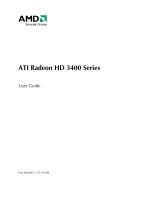 PowerColor Radeon HD3450 256MB User guide
PowerColor Radeon HD3450 256MB User guide
-
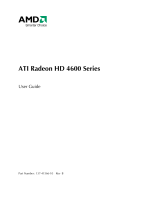 PowerColor AX4650 512MD2-H User guide
PowerColor AX4650 512MD2-H User guide
-
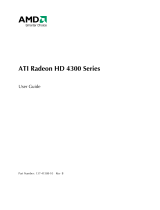 PowerColor R71BA-NI3H User guide
PowerColor R71BA-NI3H User guide
-
Hightech H687FN1GD User guide
-
AMD HD 3800 User manual
-
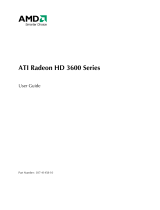 PowerColor Radeon HD3650 1024MB User manual
PowerColor Radeon HD3650 1024MB User manual
-
AMD ATI Radeon HD 5770 User manual
-
ATI ATI Radeon HD 5770 User manual
Other documents
-
HIS Radeon HD 2900 GT User guide
-
be.ez 100365 Datasheet
-
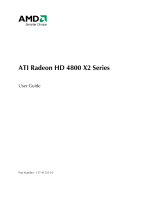 PowerColor Radeon HD4870X2 2048MB User guide
PowerColor Radeon HD4870X2 2048MB User guide
-
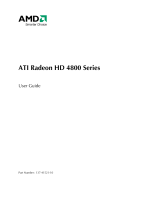 Radeon Radeon HD4870 512MB User guide
Radeon Radeon HD4870 512MB User guide
-
HIS H557HO1G User guide
-
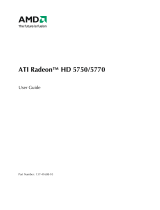 PowerColor AX5770 1GBD5-PP User guide
PowerColor AX5770 1GBD5-PP User guide
-
Sapphire H697QT2G2M User guide
-
Sitecom CN-882 Datasheet
-
Gigabyte GV-RX385256H-B User manual
-
Gigabyte GV-RX385512H-HM User manual






































































